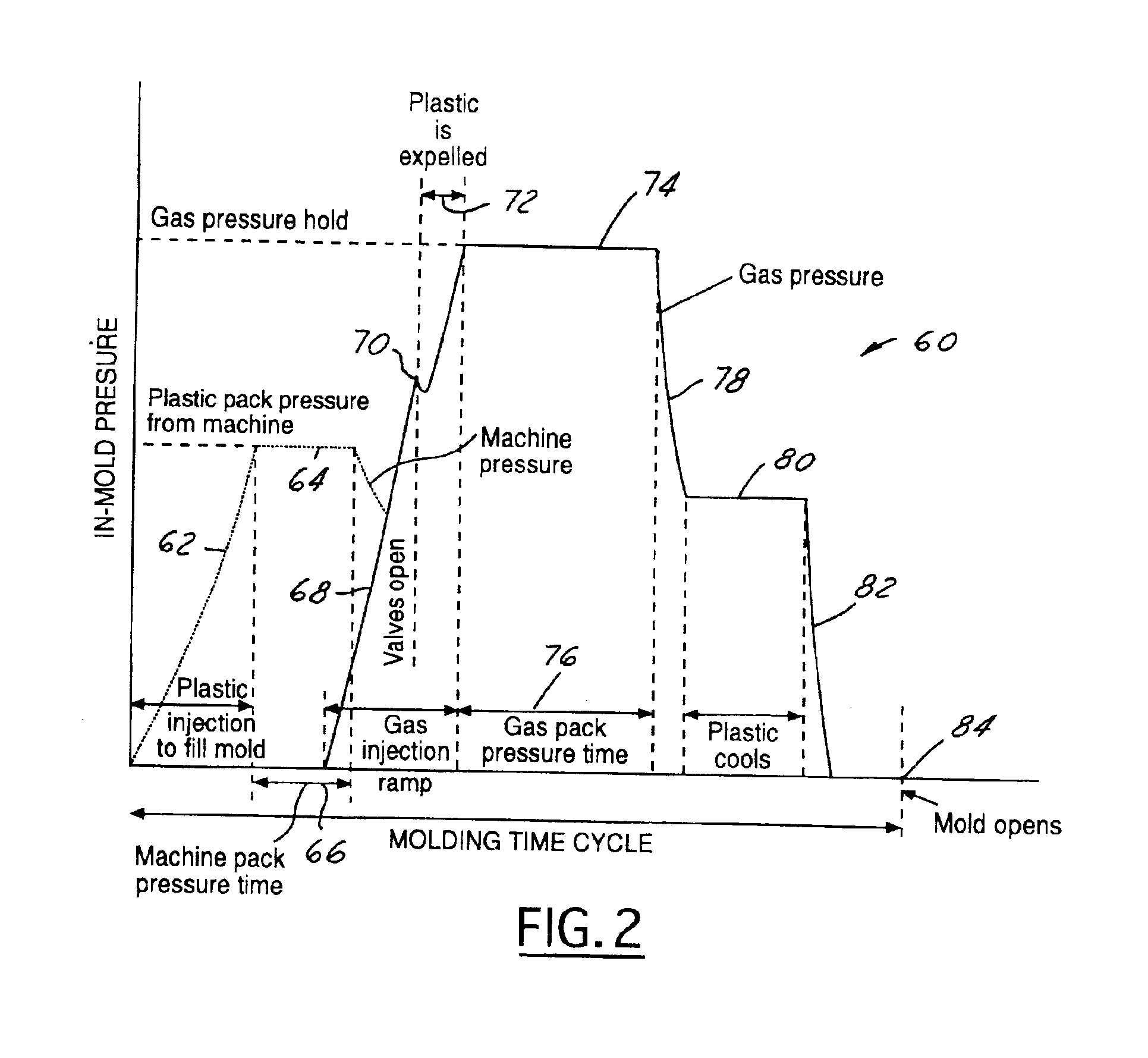Plastic expulsion process for forming hollow tubular products
a hollow tubular product and expulsion process technology, applied in the field of injection molding of plastic materials, can solve the problems of losing control of the gas, difficult to achieve difficulty in achieving sufficient gas penetration along the intended gas channel, etc., to achieve accurate control of the volume of plasti
- Summary
- Abstract
- Description
- Claims
- Application Information
AI Technical Summary
Benefits of technology
Problems solved by technology
Method used
Image
Examples
Embodiment Construction
)
[0030]FIGS. 1A-1E illustrate the sequence of steps forming a preferred embodiment of the present invention. This process is referred to generally by the reference numeral 10 in the drawings. In FIG. 1A, a quantity of molten plastic material 20 is positioned in the barrel 22 of an injection molding machine (not shown). The injection molding machine can be of any conventional type and can expel the plastic material from the nozzle 24 of the barrel in any conventional manner, such as by a helical screw or a piston 26. Although a piston member 26 is shown and illustrated and described in FIGS. 1A-1E, it is to be understood that any conventional mechanism used to expel the plastic material from a barrel of an injection molding machine can be utilized.
[0031]As shown in FIG. 1A, the nozzle 24 of the injection molding machine is connected to a mold cavity 30. The mold cavity 30 is positioned in a conventional mold which in turn is positioned in a conventional molding machine (not shown). A...
PUM
| Property | Measurement | Unit |
|---|---|---|
| time | aaaaa | aaaaa |
| included angles | aaaaa | aaaaa |
| pressure | aaaaa | aaaaa |
Abstract
Description
Claims
Application Information
 Login to View More
Login to View More - R&D
- Intellectual Property
- Life Sciences
- Materials
- Tech Scout
- Unparalleled Data Quality
- Higher Quality Content
- 60% Fewer Hallucinations
Browse by: Latest US Patents, China's latest patents, Technical Efficacy Thesaurus, Application Domain, Technology Topic, Popular Technical Reports.
© 2025 PatSnap. All rights reserved.Legal|Privacy policy|Modern Slavery Act Transparency Statement|Sitemap|About US| Contact US: help@patsnap.com



